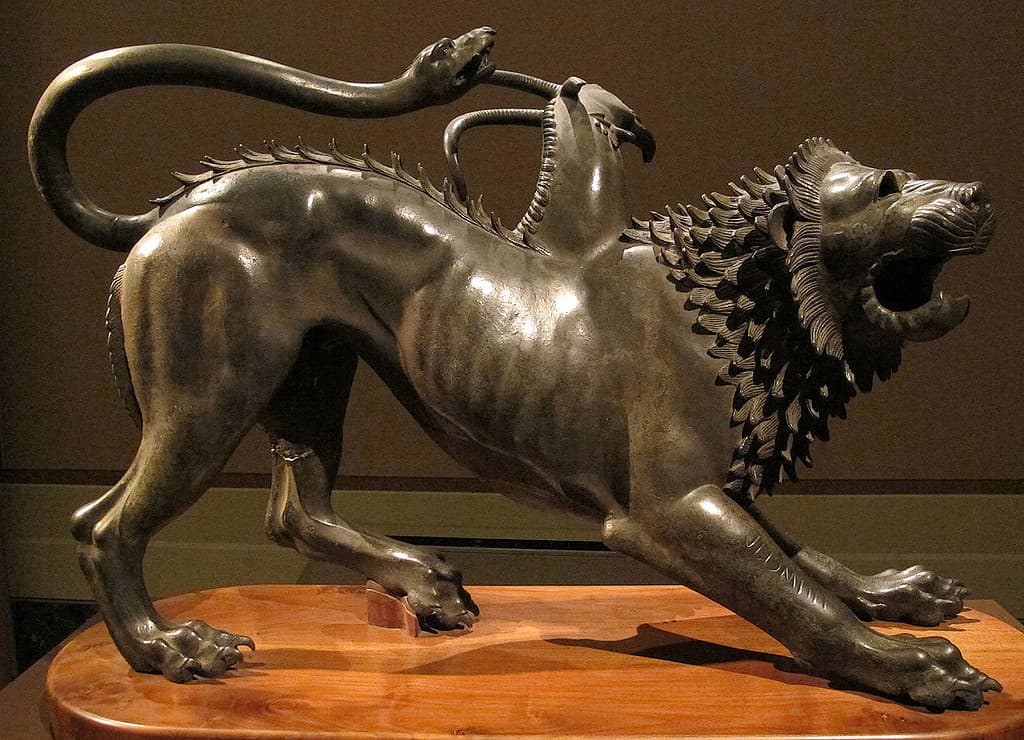A new study reports the birth of the world’s first monkey chimera in China. The monkey lived for 10 days and had genetic material consisting of cells that stemmed from two genetically different embryos of the same monkey species.

Greek mythology features the “Chimera”, a hybrid animal with two heads, one of a lion, another of a goat, and with a snake as its tail. However, there is a big difference between the mythological Chimera and the biological chimera developed by the researchers.
The former would be a hybrid, animal resulting from mixing genetic material from two or more separate species. A real-world example of this is the Liger, the result of cross-breeding between a male lion and a tigress.
A biological chimera, on the other hand, is an organism composed of cells or tissues with distinct genetic makeups. They come into existence when cells or embryos from genetically different sources merge within the same organism, resulting in the presence of two or more sets of DNA.
The researchers suggest that chimeric models are of great significance as they offer unique opportunities to study diseases and genetic mutations, test treatments, and understand organ development. Plus, they could also potentially help revive endangered animals by using closely related species as hosts to carry embryos from the endangered species.
Until now, scientists have only succeeded in creating rat and mouse chimeras. However, the recent birth of the chimeric monkey demonstrates the possibility of achieving chimeric births in more complex animals.
“This research not only has implications for understanding naive pluripotency in other primates, including humans, but it also has relevant practical implications for genetic engineering and species conservation. Specifically, this work could help us to generate more precise monkey models for studying neurological diseases as well as for other biomedicine studies,” said Zhen Liu, one of the study authors.
How did they create the first primate chimera?
To achieve the birth of this chimeric monkey, the researchers took stem cells from seven-day-old blastocyst embryos of female long-tailed macaques.
These stem cells were cultured and tested to ensure they were pluripotent, meaning they had the potential to differentiate into any cell types necessary for creating a live animal.
After confirming their pluripotency, the researchers injected some of these cells into macaque embryos that were 4-5 days old (morula stage). They also labeled the injected cells with a green fluorescent protein to later identify their presence in the tissues of the newborns.
The embryos, comprising two different types of genetic material were finally transferred into female macaques. Six monkeys were born as a result, but of them only two (one miscarried and one live birth) were identified as chimeric.
The living chimera had 26 types of tissues with traces of the fluorescent stem cells. Further tests showed that these stem cells comprised up to 92 percent of the matter in some tissues, and the average contribution was 67 percent.
In fact, the researchers noticed that a big chunk of tissues in the monkey brain was also formed by the pluripotent stem cells.
“It is encouraging that our live birth monkey chimera had a big contribution (of stem cells) to the brain, suggesting that indeed this approach should be valuable for modeling neurodegenerative diseases,” Miguel Esteban, one of the study authors, told CNN.
Sadly, the chimeric monkey’s health worsened after 10 days, as it showed signs of respiratory failure and severe hypothermia. Considering its poor state of health, the researchers euthanized the macaque.
The end of this study promises new beginnings
This chimera may not look as cool as the mythological Chimera, but it is likely to have a long-lasting impact. For instance, it has helped scientists understand the role that pluripotent stem cells play in the embryonic development process of different animals.

“This study deepens our understanding of the developmental potential of pluripotent stem cells in primate species. In this study, we have provided strong evidence that naive monkey pluripotent stem cells possess the capability of differentiating in vivo into all the various tissues composing a monkey body,” Esteban said.
Moreover, monkeys are not the only complex animals scientists are trying to create chimeras of. There have been successful attempts to develop human organs inside chimeric pig embryos in the past.
All such developments promise unlimited opportunities especially in the field of medicine, as chimeric animals have the potential to solve numerous problems related to disease modeling, organ shortage, stem cell research, and the treatment of complex genetic disorders.
The researchers will now identify and study the factors that improve the survival rate of chimeric embryos. Hopefully, this will lead to more live chimeric animal births in the future.
The study is published in the journal Cell.






